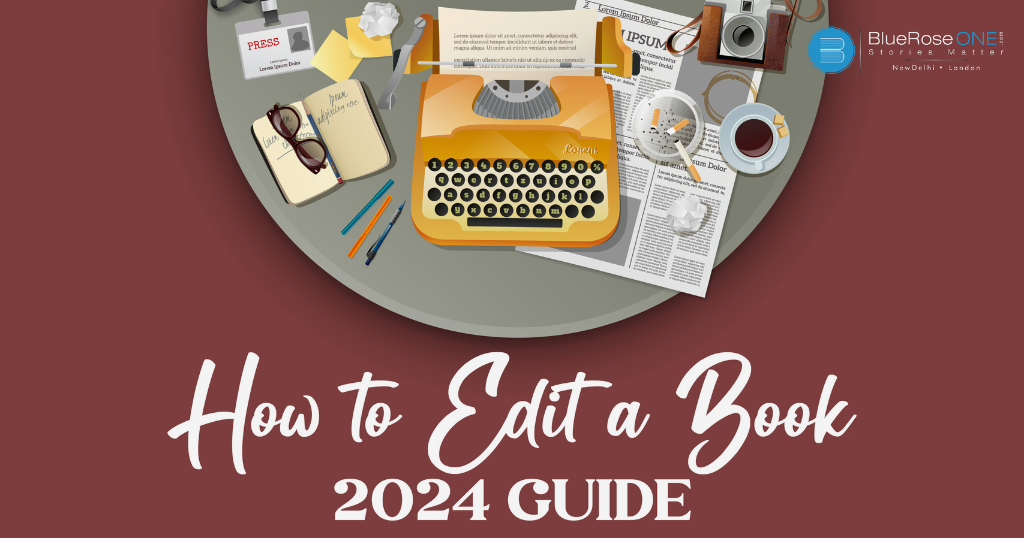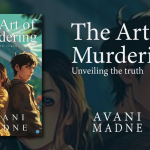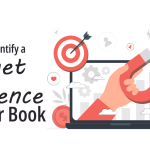Starting the process of converting your manuscript into a published book requires more than simply writing; it also necessitates thorough editing. Whether you want to self-publish or collaborate with major publishing organisations, the editing process is the first step towards transforming a raw manuscript into a literary masterpiece. Every successful book goes through multiple revisions to enhance its story, and no bestseller emerges undamaged from the editing process.
Your responsibility as a writer extends beyond storytelling; you’re inviting readers to invest their time in the world you’ve crafted. To meet this commitment, your manuscript must undergo thorough editing to ensure it delivers a well-written, entertaining, and engaging story free of structural issues that could compromise its believability. The editing process is the linchpin that distinguishes between a good story and a great book.
Editing is a multi-faceted art that unfolds in several crucial steps, each contributing to the refinement of your manuscript. The first step involves taking a strategic break after completing your manuscript. This pause allows for a fresh perspective, making it easier to identify inconsistencies, errors, and areas in need of improvement during subsequent edits.
The Importance to Take a Break Before Editing!
The first stage in the editing process is to take a deliberate break from your text rather than plunging right into it. After you’ve finished writing your work, you should take a break from it. This brief break gives you a new perspective when you return to edit.
Why is this break necessary? When you’re truly into writing, you become engaged in the universe you’ve constructed. Taking a pause helps you to stand back and look at your job more critically. It helps you break off emotional attachments to certain phrases or concepts, allowing you to spot inconsistencies, faults, and possibilities for growth.
During this break, it’s advisable to engage in activities that divert your attention, whether it’s reading a different genre, pursuing a hobby, or simply taking a walk. This distance helps you return to your manuscript with a renewed focus, making the editing process more effective.
Structural Editing:
Structural editing involves a comprehensive review of your book’s foundational elements. This phase focuses on the overall architecture of your narrative, addressing key components such as plot, character arcs, pacing, and the general flow of the story.
Here are the key aspects to consider during structural editing:
- Plot Analysis: Examine the plot structure to ensure it has a compelling beginning, a well-developed middle, and a satisfying conclusion. Look for any plot holes or inconsistencies that might affect the overall coherence of the narrative. For example, if a character’s motivation suddenly changes without sufficient explanation, it can disrupt the reader’s engagement.
- Character Arcs: Characters are the heart of any story. Evaluate the development of each character, ensuring they are well-rounded and believable. Check for consistency in their actions, reactions, and motivations throughout the story. If a character undergoes a significant transformation, make sure it is adequately justified and portrayed. For instance, if a shy introvert becomes a fearless leader, there should be gradual growth or an impactful event prompting this change.
- Pacing: Analyse the pacing of your story to ensure it maintains a balance between action and quieter moments. Pacing is crucial for keeping readers engaged. If certain sections feel rushed or overly prolonged, it can affect the overall reading experience. Consider the flow of tension and release in your narrative, aligning with the story’s genre and tone.
- Overall Flow: Consider how each chapter and scene transitions into the next. Ensure a seamless flow that guides readers through the story without confusion. Transitions should be smooth, with a logical progression that maintains the narrative’s momentum.
You may also like: 10 Classic Flat Character Examples in Literature and Film
Character Development:
Character development is a crucial aspect of effective storytelling. Well-developed and relatable characters enhance the reader’s connection to the narrative. Here’s how you can approach character development during the editing process:
- Depth and Consistency: Assess each character’s depth and consistency throughout the story. Characters should feel authentic, with motivations and actions that align with their established traits. For example, if a character is introduced as a meticulous planner, sudden, impulsive decisions without proper justification may appear inconsistent.
- Motivations and Goals: Clearly define the motivations and goals of each character. Readers should understand why characters act the way they do. If a character’s motivation is unclear or changes abruptly, it can lead to confusion. Provide sufficient context and reasoning for character decisions.
- Evolution and Arcs: Characters should undergo growth or change over the course of the story. Evaluate whether each character has a compelling arc with challenges that drive development. An example would be a protagonist overcoming personal fears or flaws to achieve their goals.
- Dialogue and Voice: Review dialogue to ensure it aligns with each character’s unique voice. Characters should have distinct ways of speaking that reflect their personalities. Consistent dialogue contributes to the authenticity of characters.
- Secondary Characters: Pay attention to secondary characters and their roles in the narrative. While they may not be as central as the main characters, their presence should contribute meaningfully to the story. Avoid introducing characters without purpose or leaving loose ends in their arcs.
By addressing these aspects of character development, you ensure that your readers engage with characters on a deeper level, making the narrative more immersive and memorable.
You may also like: 10 Elf Name Generators Fantasy Writers Can’t Miss!
Dialogue Enhancement:
Dialogue is the heartbeat of a narrative, giving characters a voice and creating a dynamic connection with readers. Effective dialogue not only propels the story forward but also serves as a powerful tool for character development. During the editing process, focusing on dialogue enhancement can elevate your manuscript from good to exceptional.
- Authenticity in Dialogue:
Authentic dialogue mirrors real-life conversations, capturing the nuances of speech patterns, vocabulary, and tone unique to each character. To achieve authenticity, immerse yourself in your characters’ personalities, backgrounds, and motivations. Consider their education, upbringing, and life experiences, as these factors shape the way they speak. - Purposeful Conversations:
Each dialogue should contribute meaningfully to the narrative. Remove unnecessary repetitions and ensure that every conversation serves a specific purpose. Whether it’s advancing the plot, revealing character traits, or building tension, each line should have a distinct role. Consider this example:- Before Editing:
John: “I really like her, you know?” Mark: “Yeah, I know. You like her a lot.” - After Editing:
John: “I really like her, you know?” Mark: “What is it about her that draws you in?”
In the edited version, Mark’s response adds depth to the conversation, prompting John to reflect on specific qualities he finds appealing.
- Before Editing:
- Subtext and Unspoken Elements:
Great dialogue often contains subtext—what characters don’t say explicitly. Readers appreciate subtlety and deciphering hidden meanings. Consider this example:- Sarah: “I guess I’ll see you around.” Alex: “Yeah, take care.”
While the words suggest a casual farewell, the subtext might imply unspoken feelings or tension. Enhancing such moments adds layers to your characters and keeps readers engaged.
- Sarah: “I guess I’ll see you around.” Alex: “Yeah, take care.”
- Individual Voice for Each Character:
Distinctive voices contribute to character differentiation. A teenager might use slang, while a professor may have a more formal tone. Ensure that characters’ voices align with their personalities and backgrounds. For instance:- Character A: “Hey, what’s up? Wanna grab a bite?” Character B: “Good evening. I was contemplating whether you’d be interested in joining me for dinner.”
Each character’s unique voice enhances the richness of your narrative.
- Character A: “Hey, what’s up? Wanna grab a bite?” Character B: “Good evening. I was contemplating whether you’d be interested in joining me for dinner.”
You may also read: Negative Adjectives to Describe People: Examples and Meanings

Copy Editing:
After refining dialogue, the next step is copy editing—delving into the minutiae of grammar, spelling, punctuation, and sentence structure. This meticulous process ensures clarity, coherence, and a professional finish to your manuscript.
- Grammar and syntax:
Correct grammar is essential for effective communication. Pay attention to subject-verb agreement, tense consistency, and sentence structure. Consider the following:- Before Editing:
She doesn’t know what’s happening. - After Editing:
She doesn’t know what’s happening.
- Before Editing:
- Spelling and Punctuation:
Errors in spelling and punctuation can disrupt the flow of your narrative. Tools like Grammarly or ProWritingAid can assist in catching common mistakes. Example:- Before Editing:
The cat is playing fetch with the ball. - After Editing:
The cat is playing fetch with the ball.
- Before Editing:
- Sentence Structure and Clarity:
Ensure that sentences are clear, concise, and logically structured. Ambiguities or convoluted phrasing can confuse readers. Consider:- Before Editing:
Despite the rain, John went for a run, which made him soaked and cold. - After Editing:
John went for a run despite the rain, leaving him soaked and cold.
By reordering the sentence, the edited version improves readability and clarity.
- Before Editing:
Consistency Check:
Consistency is the glue that holds your narrative together. A comprehensive consistency check ensures coherence in the timeline, character details, and overall style.
- Timeline and chronology:
Review the timeline to ensure events unfold logically. Inconsistencies can confuse readers. For example:- Before Editing:
Sarah met Alex in June, and a week later, it was Christmas. - After Editing:
Sarah met Alex in June, and by December, they were inseparable.
This correction aligns the timeline more logically.
- Before Editing:
- Character Names and Details: Verify that character names remain consistent throughout. A character named Robert should not suddenly become Richard without a valid plot reason.
- Stylistic Consistency:
Maintain a consistent writing style, whether it’s in terms of formatting, language, or tone. Abrupt shifts can jar readers. For instance:- Before Editing:
The protagonist was vexed. He found the situation annoying. - After Editing:
The protagonist was irritated. He found the situation bothersome.
Consistent language choices contribute to a smoother reading experience.
- Before Editing:
Beta Readers and Feedback:
Beta readers play a crucial role in the book editing process by providing valuable feedback from a reader’s perspective. These are individuals who read your manuscript before it goes to publication, offering insights into how your book resonates with its intended audience. Their fresh eyes can catch inconsistencies, pacing issues, and aspects of your story that might not be clear to a new reader.
Beta readers can be friends, family, fellow writers, or members of your target audience. Their feedback can cover various aspects, including plot structure, character development, pacing, and overall engagement. Here’s a breakdown of how to leverage beta readers and the type of feedback they can provide:
- Plot Structure: Beta readers can identify plot holes, inconsistencies, or areas where the story feels rushed or slow. For example, if a beta reader mentions confusion about a character’s sudden change in motivation, it signals a potential area for improvement.
- Character Development: Beta readers assess the authenticity and depth of your characters. If a reader finds a character’s actions inconsistent with their established traits, it indicates a need for character development. For instance, if a beta reader questions why a shy character suddenly becomes outspoken, it’s worth revisiting that character arc.
- Pacing: Feedback on pacing helps you ensure that your story maintains a balanced rhythm. If a beta reader mentions feeling bored during certain chapters or overwhelmed by rapid developments, it signals pacing issues that require attention.
- Overall Engagement: Beta readers provide subjective feedback on how engaging your book is. Comments about a reader’s inability to put the book down or losing interest at a particular point offer valuable insights.
To maximise the benefits of beta reader feedback:
- Select a Diverse Group: Choose beta readers with diverse perspectives to capture a broad range of opinions.
- Ask Specific Questions: Provide beta readers with targeted questions to guide their feedback on particular elements.
- Be Open to Critique: Embrace constructive criticism, recognising that it contributes to your manuscript’s improvement.
Incorporating beta reader feedback often involves multiple rounds of revisions. This collaborative process contributes to the refinement of your manuscript, addressing blind spots and enhancing its overall appeal.
Professional Editing Services:
Professional editing services bring a level of expertise and objectivity that can elevate your manuscript to industry standards. Here are the key types of professional editing services and their roles:
- Developmental Editing: This type of editing focuses on the big picture—plot, structure, character development, and overall coherence. A developmental editor helps strengthen the foundation of your story. For example, if your novel lacks a clear central conflict, a developmental editor can guide you in shaping a compelling narrative arc.
- Copy Editing: Copy editing hones in on language use, grammar, spelling, and punctuation. It ensures clarity and consistency in your writing. For instance, if your manuscript contains frequent grammar errors, a copy editor corrects these to enhance readability.
- Proofreading: The final stage involves proofreading, which addresses minor errors such as typos, formatting issues, and small inconsistencies. A proofreader ensures your manuscript is polished and error-free before publication.
Professional editors bring a wealth of industry knowledge, helping you navigate the complexities of the publishing world. While self-editing and beta reader feedback are invaluable, professional editing services provide a comprehensive and refined review.

Read Aloud:
Reading your manuscript aloud is a dynamic and effective editing technique that engages different senses. This method helps you identify various elements, including:
- Awkward Phrasing: When reading aloud, you’ll notice sentences that sound unnatural or convoluted. For instance, if a sentence feels cumbersome or lacks a smooth flow, it becomes apparent during this process.
- Repetitive Patterns: Hearing your words aloud makes repetitive phrases or word choices more noticeable. If a particular word is overused or a phrase becomes monotonous, you’ll catch it through oral reading.
- Narrative Rhythm: Reading aloud allows you to evaluate the overall rhythm and cadence of your writing. If a section feels abrupt or lacks a natural flow, it becomes evident during the reading.
- Dialogue Authenticity: Dialogue that sounds stilted or unrealistic becomes apparent when read aloud. Authentic dialogue contributes to character believability.
For example, if a character’s dialogue feels forced or inconsistent with their established voice, reading aloud helps pinpoint those areas for improvement.
The act of vocalising your words brings a different dimension to the editing process, revealing nuances that might be missed during silent reading. This technique enhances the overall clarity and effectiveness of your prose.
Final Proofreading:
The final proofreading stage is a meticulous examination of your manuscript before declaring it ready for publication. This step ensures that your book is polished and free from any lingering errors. Here’s a breakdown of the final proofreading process:
- Typos and Spelling Errors: Scan your manuscript for any remaining typos or spelling mistakes. Even after multiple rounds of editing, some errors may persist.
- Formatting Issues: Check for consistency in formatting, including font styles, indentation, and spacing. Ensure that your manuscript adheres to the formatting guidelines suitable for your chosen publishing platform.
- Minor Errors: Address any minor errors or inconsistencies that might have been overlooked in earlier edits. These can include punctuation glitches, minor grammatical issues, or small formatting discrepancies.
An example could be a sentence where a period is missing or a section where the font size varies unexpectedly.
By conducting a final proofread, you give your manuscript a last layer of scrutiny, guaranteeing a professional and polished final product. This meticulous approach reflects your commitment to delivering a high-quality reading experience to your audience.
Read: A Complete 2024 Guide: How to Write & Create a Book & Get it Published Globally!
Editing is the transformative process that elevates your manuscript from a draft to a refined work of art. By embracing each stage of editing, from structural changes to the final proofread, you’ll craft a book that captivates readers and stands the test of time. Remember, editing is not just about fixing mistakes; it’s about enhancing the beauty of your unique storytelling voice.
Publish your book with BlueRoseONE and become a bestselling author. Don’t let your dream of becoming an author fade away, grab the opportunity now and publish your book – be it fiction, non fiction, poetry or more.















